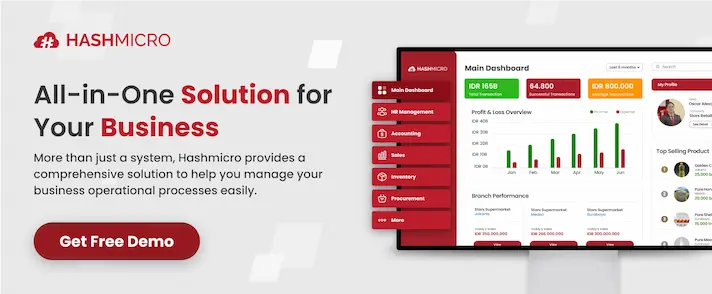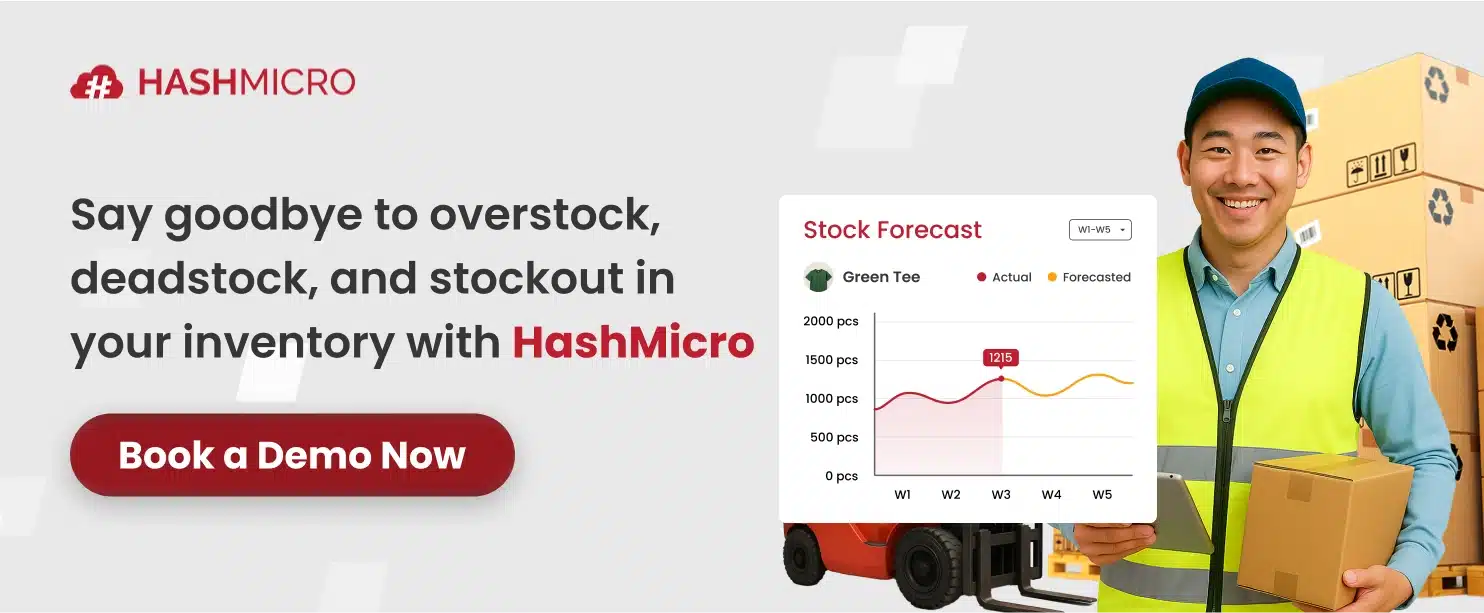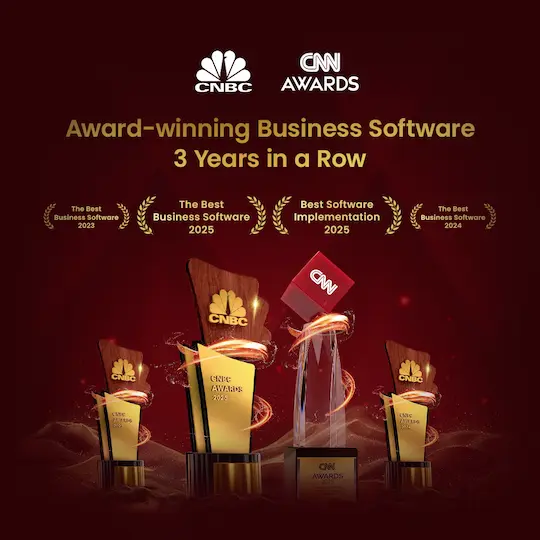Are you constantly dealing with piles of unsold goods taking up warehouse space? Does your business often face stuck inventory that slows down cash flow and reduces flexibility? Without a doubt, excess stock remains a silent drain on resources for many companies.
According to a 2023 IHL Group study, global inventory distortion, including overstock, has cost businesses around $1.77 trillion. Companies worldwide struggle with tied‑up capital, markdowns, and operational inefficiencies. This figure highlights why proactive inventory control is essential.
However, many still rely on outdated manual processes that lack speed and accuracy. Therefore, miscalculations in demand forecasting occur more frequently. This often results in slow-moving items piling up, reducing working capital, and hurting long-term growth.
Fortunately, there are smarter systems and strategies to address these issues head-on. With the right tools, you can minimize surplus stock, streamline inventory flow, and boost responsiveness. This guide will explain what is excess stock, its causes, and how to get rid of it efficiently.
Key Takeaways
|
What is Excess Stock?
Excess stock refers to unsold inventory that a business doesn’t expect to move in the near future. In many cases, this type of stock sits idle for extended periods, gradually losing value. As time passes, it can turn into dead stock, which is even harder to recover from financially.
Moreover, dead stock ties up storage space, increases warehousing costs, and limits your ability to rotate fast-moving items. As a result, profitability suffers, and operations become less flexible. This is why understanding the excess stock’s meaning is critical for long-term efficiency.
Also known as surplus or overstock, excess stock is often the result of poor forecasting or misaligned purchasing decisions. It typically builds up unnoticed until the financial impact becomes too large to ignore.
What are the Causes of Excess Stock?

Excess stock is typically caused by a mix of internal processes and external factors. Let’s explore the primary causes that lead to the accumulation of unsold goods.
1. Poor demand forecasting & seasonal oversights
Inaccurate demand forecasting is a common cause of excess stock. When companies misjudge demand, they often end up with more products than needed, resulting in an overstock problem. Additionally, ignoring seasonal fluctuations in demand can lead to over-ordering during off-seasons, causing overstock.
2. Supply chain disruptions & inaccurate safety stock
Supply chain disruptions can cause delays, prompting businesses to order extra stock to avoid running out. Similarly, inaccurate safety stock levels, if not regularly adjusted, lead to inflated stock levels. These factors both contribute to overstock, especially when demand doesn’t match predictions.
3. Ineffective product lifecycle management & obsolescence
Without proper tracking of a product’s lifecycle, businesses continue to order goods even as demand for them declines. This leads to excess stock that no longer sells well. Additionally, sudden product obsolescence due to shifting trends or consumer behavior adds to the issue.
4. Poor purchasing decisions & overzealous stock availability
In some cases, businesses buy in large quantities to take advantage of bulk discounts, even when they don’t need that much stock. Similarly, the pursuit of 100% stock availability often leads to overordering to avoid running out of stock. Both practices increase the chances of holding excess goods.
5. Supply chain complexity
For complex multi-location supply chains, it’s easy to lose track of inventory needs. Even if stock levels are optimized at one location, miscommunication or mismatched data across locations can result in carrying more inventory than necessary throughout the entire network, leading to excess stock.
Strategies to Manage Excess Stock
Managing excess stock effectively requires strategic action. Here are several methods businesses can implement to address the problem and reduce inventory surpluses:
1. Offer discounts on overstocked items
By providing lower prices on surplus products, you can encourage customers to purchase these items instead of full-priced inventory. This helps free up valuable space and reduces holding costs.
2. Bundle products to clear surplus stock
Bundling is a great way to move excess stock while keeping customers interested in your offerings. Offering a popular product at a discount when paired with an overstocked item can help increase sales and clear out unwanted inventory, without slashing prices on bestsellers.
3. Reposition & rebrand overstock items
If you find yourself with excess stock, consider repositioning or remarketing these products. Whether it’s shifting unsold items to more visible areas in a physical store or refreshing online listings with new images, changing how products are presented can spark customer interest.
4. Reward loyal customers with exclusive offers
Use loyalty programs as a way to move stock. Offering existing customers extra rewards, points, or exclusive discounts on surplus items can motivate them to purchase what they might not otherwise buy. This approach encourages repeat business while clearing inventory.
5. Give back by donating unsold goods
Another strategy to clear excess stock is donating it to charities or non-profit organizations. Donating goods not only frees up warehouse space but also provides a positive PR boost for your business, all while helping those in need. Additionally, tax benefits may be available for charitable donations.
6. Sell off inventory through liquidation
If the excess stock is not moving, consider liquidation. Stock liquidation involves selling unsold inventory to other businesses at a deep discount. This helps you clear space quickly, though it may not fully recoup your costs. However, it’s a viable option to offload excess stock while keeping your business running.
7. Leverage automation for inventory control
Finally, one of the most effective ways to manage excess stock is by automating your inventory control. Modern ERP inventory systems can track your stock levels in real-time, help forecast demand accurately, and adjust orders to avoid overstocking. This ensures that your inventory remains balanced, reducing the risk of excess stock.
If you want to optimize your inventory management, HashMicro’s ERP software is the solution. With real-time tracking and automated alerts, you can prevent excess stock and improve efficiency. Click the banner below for pricing details. Singapore businesses can also benefit from the 70% CTC grant to reduce implementation costs.
How to Get Rid of Excess Stock

Excess inventory can be a major challenge for businesses, but there are strategies to cut down on it and boost your cash flow overall. Here’s a practical way to manage surplus stock effectively:
1. Assess the scope of the problem
The first step is understanding how much excess stock you have. Begin by evaluating the value of your inventory. Are you dealing with slow-moving items or products that are just not selling? By breaking your inventory down into categories, you can easily identify the stock that needs attention.
2. Prioritize key products
After identifying the excess stock, focus on the products that matter most. Look beyond basic sales figures; consider factors like margin contribution and customer demand. This will help you allocate resources to products that are truly driving your business forward.
3. Regularly review service levels
Continuously monitoring your service levels is essential for keeping excess stock at bay. Track key metrics such as customer demand and stock turnover to spot any potential issues. Regular reviews will help you adjust your strategy before excess inventory becomes a recurring problem.
4. Refine your stocking strategy
A disorganized stocking strategy can lead to unnecessary overstocking. Take a step back and review your stocking policies. With a clearer, more structured approach to purchasing and inventory management, you’ll be able to keep stock levels balanced and avoid over-purchasing.
5. Understand product lifecycles
Every product follows a lifecycle, from introduction to decline. Being aware of these stages can help you manage your stock more effectively. During the decline stage, for instance, reduce orders or even phase out products before they become excess inventory that ties up valuable resources.
6. Rationalize your assortment
Rather than focusing on which products to eliminate, take a closer look at your entire assortment. Assess each product’s performance on how often it sells, the revenue it generates, and the profit margins. If certain items consistently underperform, it might be time to remove them from your inventory.
7. Address supplier performance
Supplier delays can significantly contribute to excess stock, so it’s important to assess how well your suppliers are meeting deadlines. If there are issues with delivery accuracy or timeliness, it can lead to overstocking. By addressing these issues early, you can prevent supplier-related excess stock from becoming a chronic problem.
8. Collaborate more effectively
Collaboration between your suppliers, customers, and internal teams is essential for managing stock levels. Sharing accurate demand forecasts with suppliers helps them align better with your needs. This mutual understanding enables better inventory management and ensures that you avoid accumulating excess stock in the future.
Avoid Accumulating Excess Stock with HashMicro’s Inventory Solution
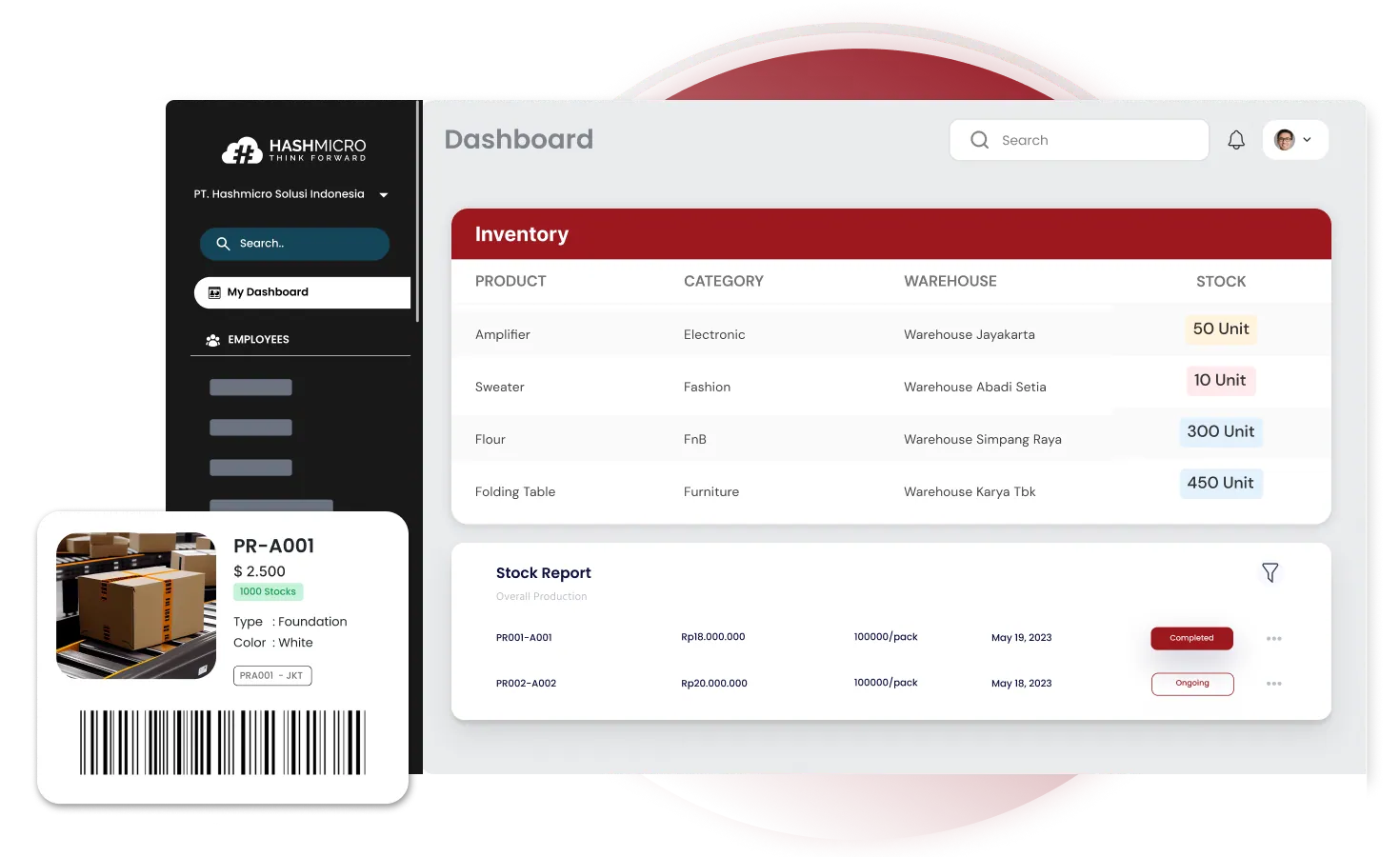
HashMicro’s Inventory Management Software equips businesses with the tools they need to manage stock efficiently. With features like real-time tracking, automated stock alerts, and demand forecasting, companies can prevent the accumulation of excess stock and reduce waste.
HashMicro helps businesses monitor product turnover, identify low-performing items, and make smarter purchasing decisions. It features stock aging analysis, multi-location management, and integration with procurement and sales systems for accurate stock levels.
HashMicro Inventory Management Software helps businesses in Singapore and worldwide optimize warehouse operations, boost working capital, and synchronize stock strategies with live market demand. This ultimately fosters sustainable growth and enhances supply chain management.
Key features supporting excess inventory:
-
Real-Time Barcode Tracking
Barcode scanning helps businesses track stock movements in real time across various locations. This feature enables companies to identify slow-moving items and address potential overstocking before it occurs.
-
Track Lot and Serial Numbers
HashMicro’s system tracks lot and serial numbers automatically, allowing businesses to trace the age and history of each product. This helps identify stagnant stock, enabling quicker action before the items become surplus and waste.
-
Efficient Stock Requests
Automated stock requests prevent unnecessary overordering by ensuring restocking only happens based on actual demand. This reduces the chances of carrying excess stock due to over-purchasing or duplication across warehouses.
-
Advanced Demand Forecasting
With advanced demand forecasting tools, businesses can predict future stock needs by analyzing historical data and seasonal trends. This ensures purchases are aligned with actual demand and reduces overstocking caused by inaccurate forecasts.
-
Inventory Valuation for Smarter Decisions
Regularly valuing stock allows businesses to identify inefficiencies and unsold goods. By eliminating underperforming items, companies can optimize purchasing decisions and reduce excess stock accumulation.
-
Stock Ageing Insights
Stock aging analysis provides visibility into how long products have been sitting in inventory. By identifying slow-moving items, businesses can take proactive measures (like promotions or discontinuations) to clear stock before it becomes a larger issue.
Conclusion
Managing excess stock is essential for improving both operational efficiency and profitability. By identifying slow-moving products, refining stocking strategies, and using accurate demand forecasting, businesses can prevent overstocking and optimize inventory management which reduce waste and free up valuable resources.
HashMicro’s Inventory Management Software helps businesses control stock with real-time tracking, alerts, demand forecasting, barcode management, and stock aging analysis. It reduces excess stock and keeps inventory optimal across multiple locations.
Ready to take the next step? Book a free demo of HashMicro’s Inventory Management Software to see how it can help your business streamline processes, reduce excess stock, and improve overall efficiency.
FAQ about Excess Stock
-
What happens to excess stock?
Excess stock, if poorly managed, wastes space and capital, increasing storage costs and harming cash flow. It can be sold, donated, or written off. Proper management and forecasting are crucial.
-
What is the word for excess stock?
Excess stock is also referred to as overstock, surplus stock, or inventory surplus. These terms describe goods that exceed customer demand and are typically held in inventory for longer than necessary. Managing this stock properly is crucial to avoid tying up valuable resources.
-
What is the difference between excess stock and obsolete stock?
Excess stock is sellable but accumulated due to overordering or slow demand, while obsolete stock is unsellable due to changing preferences, technology, or expiration.
-
How to calculate excess stock?
To calculate excess stock, businesses need to compare the stock they have on hand with their sales forecasts and customer demand. The formula involves subtracting the ideal stock levels (based on demand and forecast) from the actual stock on hand.



